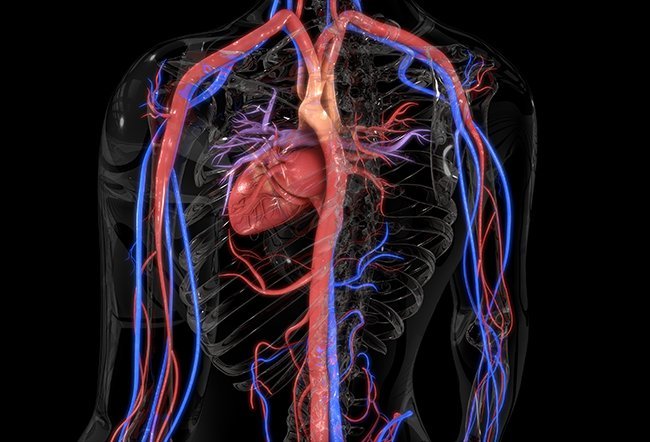What Are the Major Arteries?

Blood passes from the heart to the tissues through channels of different arteries, which can vary in size. As arteries extend further from the heart, they usually become narrower. Additionally, arteries will continually branch off into smaller arteries, arterioles and capillaries, forming the vascular bed.
The major arteries in the body are:
- The aorta
- The largest artery in the body, which connects directly to the left ventricle of the heart.
- It begins the systemic division of the arterial system, which includes all the arteries that deliver blood to all the tissues in the body other than the lungs.
- Arteries of the head and neck (carotids)
- Brachiocephalic artery: This artery and its branches supply blood to the right side of the head and neck and the right arm.
- Left common carotid artery: This artery supplies blood to the left portions of the head and neck.
- Arteries of the torso (aortic subdivisions, coronaries and subclavian)
- Left and right coronary arteries: The coronary arteries supply blood to the muscles of the heart.
- Left subclavian artery: This artery supplies blood to the left arm.
- Thoracic aorta: The thoracic aorta supplies blood to tissues in the chest.
- Abdominal aorta: The abdominal aorta supplies blood to the lower portions of the body including the legs.
Here is a list of the major arteries and their branches:
- The aorta
- The arteries of the head and neck
- The arteries of the upper extremity
- The arteries of the trunk
- The descending aorta divides into:
- The thoracic aorta (supplies muscles of the chest wall and to the spinal cord)
- The abdominal aorta (supplies mainly the abdominal structures and organs)
- The common iliac arteries divide into:
- The descending aorta divides into:
- The arteries of the lower extremity
Arteries make up only a portion of the blood vessels in the body. They further divide into arterioles and capillaries.
- Arterioles are the smallest arteries, and they connect directly to capillaries to form the capillary bed.
- Capillaries are the blood vessels where the exchange of oxygen, nutrients and waste occurs between the blood and cells.
The capillaries are connected to the venous system via venules, which join to form veins. The venous system brings the deoxygenated blood from the rest of the body to the lungs, completing the vascular circuit.
What are the different types of arteries?
Arteries are the blood vessels that carry blood away from the heart. The different types of arteries include:
- Elastic arteries: are also called conducting arteries that have a thick middle layer that stretches in response to each pulse.
- Muscular arteries: are medium-sized arteries that draw blood from elastic arteries.
- Arterioles direct the blood into the capillaries and are arterial divisions that transport blood away from the heart.
What are the common diseases of arteries?
Various disorders can affect the structure and cross-section of the arteries, causing systemic disorders, such as:
- Peripheral vascular disease: The arteries suffer blockages or narrowing due to various causes (aging, smoking, scaring, autoimmune diseases) and cause vascular compromise to the organs they supply.
- Atherosclerosis: In this condition, there is an accumulation of cholesterol plaques on the inner walls of their arteries, causing narrowed cross-sections or clot formation, which affects the organs they supply. Causes of atherosclerosis are aging, genetic predisposition, abnormal lipid profile, etc.
- Arterial aneurysm:
- This is the local ballooning in the artery caused by weakness in the arterial wall.
- The cause may be congenital, injuries, etc.
- In some cases, the aneurysm may rupture, leading to life-threatening conditions or sudden death.
